TOP 5 advantages of the latest generation of DJI Phantom quadcopters (from the point of view of the boom)
I sit and read Giktimes on topics of interest to me and find just such an article , which supposedly DJI is bad and terrible.
There were many opinions and facts in the comments.
Yes, I agree, dear machine. Yes, on your favorite APM and Pixhawk you can assemble a magnificent kopter (convertoplan, plane, rover, boat). Many features that are declared in the new phantoms in one way or another have already been implemented by the community.
But the wrapper is a commercial product that is successfully sold in large quantities. Its closest competitor, 3DR, is far behind. In this article, you can see what DJI does at times more sales than 3DR. Although it is clear that Parrot sells more, but they have devices of another class. The number of self-assemblies is difficult to count, but in real life I see them very rarely.

')
So let's look at the candy wrapper from a different angle and find advantages from the point of view of the geek.
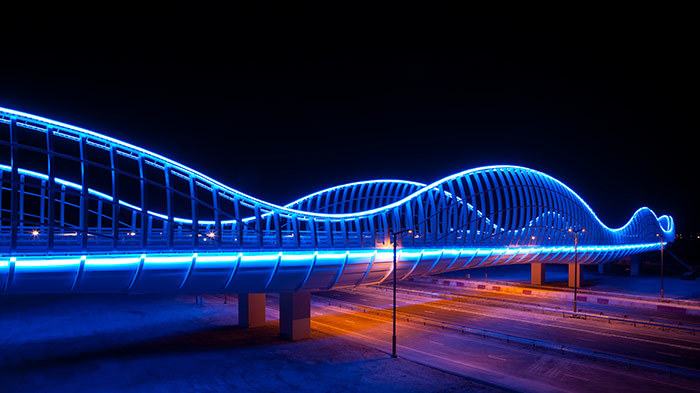
Here, Lightbridge refers to the version from Inspire and Phantom.
Would you like to fly a couple of kilometers and still have an HD picture? And if the first is solved by any analog transmitter, then with the second ambush there are simply no cheap transmitters for transmitting high-resolution video with low latency. If you want yourself such a video as on the third candy wrapper, then you will have to spend more than half of its value on the cost (though it is worth mentioning that the guys from the virtual street have their own solution at a more humane price).
"And why do we need xd?" - You might ask. But in order to understand this, you need to try - the picture with the minimum delay (here it is from 0.2s) and high resolution (720p) gives a lot more fun. Also a definite plus is the support of many programs of virtual presence helmets, where good resolution is vital for sensations.
Ok, I hope the fact that high resolution doesn’t cause questions anymore. But there may be a claim to the camera. And if there are quite good cameras for inspectors, developed in collaboration with blackmagick (with interchangeable optics, large matrix, video recording in rav), then phantoms can not change the camera for a better one. Although, as they say, if you really want, you can:
At the same time, the video from the integrated camera on Lightbridge, apparently, is transmitted via HDMI:

This video , as well as the article g0l'a - indirect confirmation of this.
In contrast to intercepting video of a wifi link in osmo and ko, I do not yet know how to capture an image with the continuation of the work of the software for controlling the rotor. Alternatively, you can capture either from the screen, or the HDMI that the inspector has and can install the phantom on the console to display an image on an arbitrary monitor, or organize a broadcast.
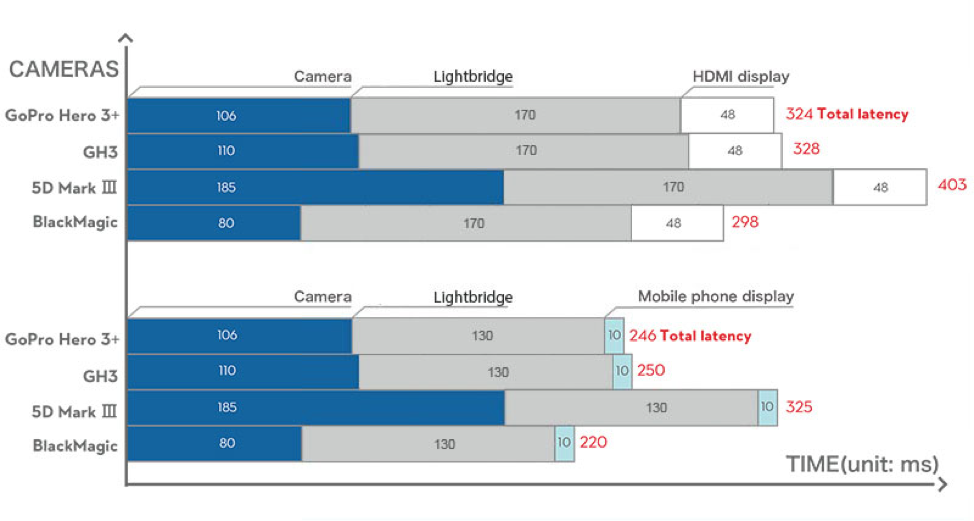
Of the minuses: floating delay from 0.2 to 1 second, periodic friezes, the complexity of the organization of broadcasting.
The DJI Phantom 2 Vision +, Phantom 3 Standart and Osmo cameras are equipped with a Wi-Fi module to which you can connect and listen to what is being transmitted.

A good how-to how to connect was recently found by me on the Internet from habravchaninina Gol . In short, you can implement your streaming video, which is very good. But it is more interesting for me to dig into telemetry, than I will try to do in the near future.
DJI gives access to the API of its products. You can access the management of the copter itself, the suspension and the camera. Everything is available for reading, including information from the remote and batteries. Based on this, the SDK creates many applications, including for narrow business tasks, such as cartography.
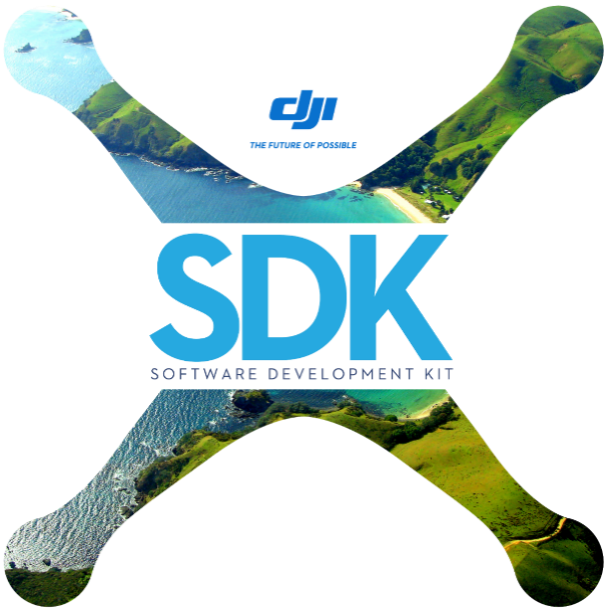
The SDK is developing quite actively. By the end of 2015 / early 2016, a major transition was made to the new major version of the SDK (from 2 to 3). New commits are often seen in the repository.
For myself, I made a small program for iOS, which removes diagnostic information from the drone. Sometimes I use an example from the repository, which allows you to program flight point by point and shoot (in the standard application, this function is for some reason absent).
In general, DJI actively encourages developers for its platform. Now, for example, there is the third DJI Developer Challange with very interesting tasks and valuable prizes.
The community around MAVLink is also active and has its own development tools, but the threshold for entering them is higher. Now 3DR is trying to solve this problem and luring developers to its development platform .
Since the days of DJI Phantom 2, such an element of the copter as a battery has got its own brain and interesting features. In fact, DJI Intelligent Flight Battery is a separate device with its controller and firmware, which is updated periodically. In the DJI GO application, you cannot get the controller version, but the SDK gives you this opportunity. It would be interesting to carry out correlations between the behavior of the battery and the version of its firmware, but so far I don’t know how to do it (in fact, I don’t see data from a regular application with my info from my own, but easy and convenient way).
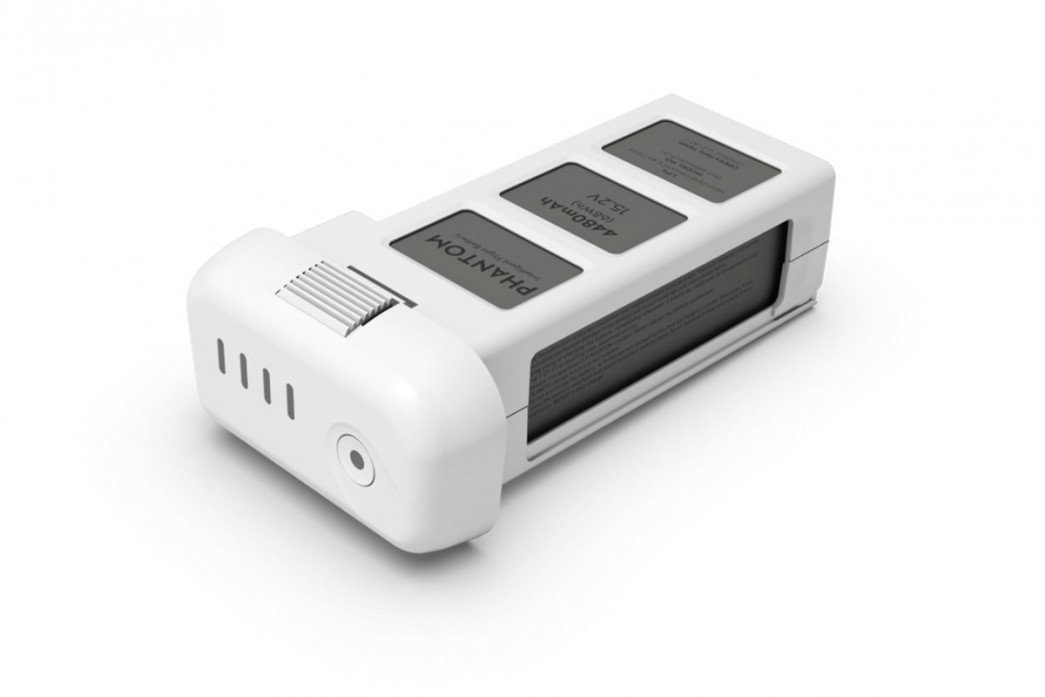
For now, let's see the most interesting features in my opinion:
I used to think that only OpenSource has a powerful community. If you look at the world of MAVLink (APM, Pixhawk), then you can immediately see a lot of activity on sites like diydrones.com.
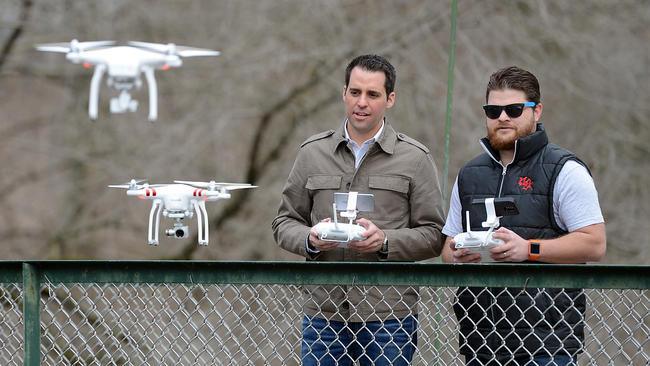
Having dug a little deeper, I found the powerful foreign community of Phantom Pilots , where not only those who are engaged in aerial photography, but also many techies who are engaged in the reverse of hardware and software are sitting. You can find a lot of interesting news or features.
Despite the fact that the Phantom is a closed system, you can pick it up a little and go beyond the limits. With all this, the copter is already ready out of the box for simple flight and shooting, and there is no need to adjust the pids before each flight.
I did not describe the new features that were presented in the new model Phantom 4, because he did not touch him and did not find good reviews with the "immersion" inside. The overflight obstacle function looks promising. Judging by the company's previous product, namely Guidance , they already have the experience and technology to work with enveloping obstacles. I hope that I can soon dig in more detail. And I wonder whether it will be possible to access this system?
I want to devote the following article to the analysis of the phantom battery.
There is a small study based on the processing of hundreds of logs that I collect on this site .
There were many opinions and facts in the comments.
Yes, I agree, dear machine. Yes, on your favorite APM and Pixhawk you can assemble a magnificent kopter (convertoplan, plane, rover, boat). Many features that are declared in the new phantoms in one way or another have already been implemented by the community.
But the wrapper is a commercial product that is successfully sold in large quantities. Its closest competitor, 3DR, is far behind. In this article, you can see what DJI does at times more sales than 3DR. Although it is clear that Parrot sells more, but they have devices of another class. The number of self-assemblies is difficult to count, but in real life I see them very rarely.

')
So let's look at the candy wrapper from a different angle and find advantages from the point of view of the geek.
1. DJI Lightbridge

Here, Lightbridge refers to the version from Inspire and Phantom.
Would you like to fly a couple of kilometers and still have an HD picture? And if the first is solved by any analog transmitter, then with the second ambush there are simply no cheap transmitters for transmitting high-resolution video with low latency. If you want yourself such a video as on the third candy wrapper, then you will have to spend more than half of its value on the cost (though it is worth mentioning that the guys from the virtual street have their own solution at a more humane price).
"And why do we need xd?" - You might ask. But in order to understand this, you need to try - the picture with the minimum delay (here it is from 0.2s) and high resolution (720p) gives a lot more fun. Also a definite plus is the support of many programs of virtual presence helmets, where good resolution is vital for sensations.
Ok, I hope the fact that high resolution doesn’t cause questions anymore. But there may be a claim to the camera. And if there are quite good cameras for inspectors, developed in collaboration with blackmagick (with interchangeable optics, large matrix, video recording in rav), then phantoms can not change the camera for a better one. Although, as they say, if you really want, you can:
At the same time, the video from the integrated camera on Lightbridge, apparently, is transmitted via HDMI:

This video , as well as the article g0l'a - indirect confirmation of this.
In contrast to intercepting video of a wifi link in osmo and ko, I do not yet know how to capture an image with the continuation of the work of the software for controlling the rotor. Alternatively, you can capture either from the screen, or the HDMI that the inspector has and can install the phantom on the console to display an image on an arbitrary monitor, or organize a broadcast.

Of the minuses: floating delay from 0.2 to 1 second, periodic friezes, the complexity of the organization of broadcasting.
2. Break open Wi-Fi
The DJI Phantom 2 Vision +, Phantom 3 Standart and Osmo cameras are equipped with a Wi-Fi module to which you can connect and listen to what is being transmitted.

A good how-to how to connect was recently found by me on the Internet from habravchaninina Gol . In short, you can implement your streaming video, which is very good. But it is more interesting for me to dig into telemetry, than I will try to do in the near future.
3. Programmability
DJI gives access to the API of its products. You can access the management of the copter itself, the suspension and the camera. Everything is available for reading, including information from the remote and batteries. Based on this, the SDK creates many applications, including for narrow business tasks, such as cartography.

The SDK is developing quite actively. By the end of 2015 / early 2016, a major transition was made to the new major version of the SDK (from 2 to 3). New commits are often seen in the repository.
For myself, I made a small program for iOS, which removes diagnostic information from the drone. Sometimes I use an example from the repository, which allows you to program flight point by point and shoot (in the standard application, this function is for some reason absent).
In general, DJI actively encourages developers for its platform. Now, for example, there is the third DJI Developer Challange with very interesting tasks and valuable prizes.
The community around MAVLink is also active and has its own development tools, but the threshold for entering them is higher. Now 3DR is trying to solve this problem and luring developers to its development platform .
4. Battery "with head"
Since the days of DJI Phantom 2, such an element of the copter as a battery has got its own brain and interesting features. In fact, DJI Intelligent Flight Battery is a separate device with its controller and firmware, which is updated periodically. In the DJI GO application, you cannot get the controller version, but the SDK gives you this opportunity. It would be interesting to carry out correlations between the behavior of the battery and the version of its firmware, but so far I don’t know how to do it (in fact, I don’t see data from a regular application with my info from my own, but easy and convenient way).

For now, let's see the most interesting features in my opinion:
- “Sleep” mode is activated after an idle time of 20 minutes, preventing you from wasting your charge.
- Autodischarge function that allows you not to worry about long-term battery storage. The controller takes care of the discharge to 65% (optimal for long-term storage). Although I read on the forums that the battery is still discharged to 0 in two months.
- The battery stores errors for the last 30 days, which is useful for its subsequent maintenance and repair. You can read this story through DJI GO or take it via SDK.
- Automatic balancing of cells in a battery when charging is a feature of a smart battery.
- Information exchange with the onboard PC of the drone in real time, which allows the battery to send signals to the copter for an emergency landing and to report errors.
5. Enthusiast community
I used to think that only OpenSource has a powerful community. If you look at the world of MAVLink (APM, Pixhawk), then you can immediately see a lot of activity on sites like diydrones.com.

Having dug a little deeper, I found the powerful foreign community of Phantom Pilots , where not only those who are engaged in aerial photography, but also many techies who are engaged in the reverse of hardware and software are sitting. You can find a lot of interesting news or features.
In the end
Despite the fact that the Phantom is a closed system, you can pick it up a little and go beyond the limits. With all this, the copter is already ready out of the box for simple flight and shooting, and there is no need to adjust the pids before each flight.
I did not describe the new features that were presented in the new model Phantom 4, because he did not touch him and did not find good reviews with the "immersion" inside. The overflight obstacle function looks promising. Judging by the company's previous product, namely Guidance , they already have the experience and technology to work with enveloping obstacles. I hope that I can soon dig in more detail. And I wonder whether it will be possible to access this system?
I want to devote the following article to the analysis of the phantom battery.
There is a small study based on the processing of hundreds of logs that I collect on this site .
Source: https://habr.com/ru/post/391887/
All Articles